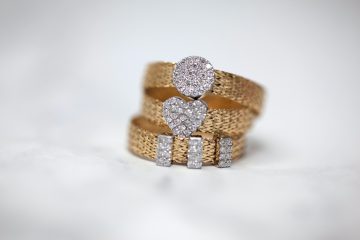Silver is available at different levels and different alloys. A silver stamp showing 925 means that on a kg of material is 925 g silver. For example, jewelry can be coated with rhodium without being specified.
If you mix different kinds of silver by soldering, for example, a sieve in fine silver on sterling silver, the marking becomes 925 just like sterling silver. The lowest content applies if you mix different types of silver.
Fine silver contains 99.9% silver ie 999g of 1 kg is silver. It is stamped 999. It is soft and can be used with seams for all kinds of soft and brittle gemstones.
Sterling silver contains 92.5% silver, ie 925gr silver in 1kg sterling silver The most common is that the rest contains copper. It is the sterling silver that is most commonly used in many countries. The stamp used for this silver is 925. Sterling silver is stronger and harder than fine silver and is common in jewelry.
Silver that contains 83.0% silver, ie 830g in 1kg is silver. It was common in utensils. The disadvantage of this silver is that it melts at a lower temperature, not as smoothly as sterling silver, and turns slightly black. It is stamped 830.
Silver clay is powdered silver which is mixed with a binder. When the clay is burnt, it can contain 99.9% silver or 92.5% silver depending on the kind used.
Argentium is a silver that has started to use more and more recently, especially in England and the United States.
Argentium silver contains about 935g silver per kilo. In ordinary sterling silver, the remainder is copper, but in Argentium silver, some copper has been replaced with germanium, which gives a smooth and strong silver that does not blackout in the same way as ordinary sterling silver. Germanium wanders into the silver and settles into the surface, preventing oxidation. After curing, it can be up to about 2 times as hard as regular sterling silver. It can be stamped 925 or 935, but if it is Argentium then you add a stamp in the form of a unicorn.



